The 3-2-1 Column: Hoops wins, recruiting, ranking the road trips and more
In this week's 3-2-1 Column, we're thinking about Pitt's current winning streak, another WPIAL recruiting loss, the Panthers' football road trips, Konata Mumpfield and more.
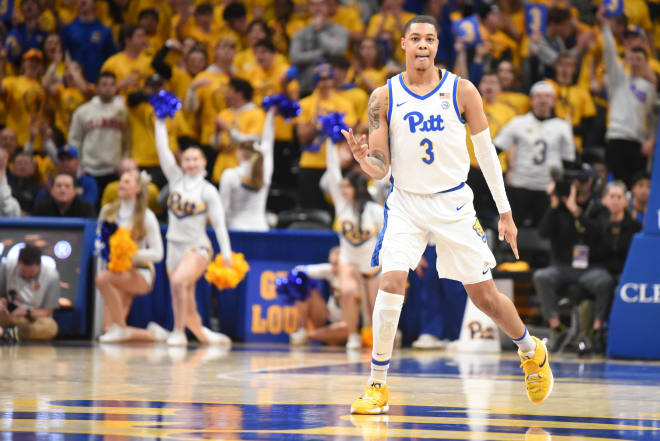
THREE THINGS WE KNOW
Treading on some record-breaking ground
Pitt’s win at Louisville Wednesday night wasn’t just another ACC victory for a team that’s starting to stack them up.
It was an all-time win, one that will go in the record books. And I’m not exaggerating.
By beating the Cardinals 75-54, the Panthers recorded their largest margin of victory in an ACC road game ever. Before that, the biggest win Pitt had pulled off in an ACC game on the road was when Jamie Dixon’s team beat Syracuse at the Dome by 14 in February 2016.
This one blew that one away, and I don’t think this team is done breaking records.
Here’s the next one that’s on tap:
Pitt is 6-2 so far in ACC play. That ties for the Panthers’ best start to the conference schedule since joining the league in 2013. The other time the team won six of its first eight ACC games was the 2013-14 season - Pitt’s inaugural year as a member of the conference.
That year, the Panthers opened 6-2 but fell in game No. 9 with a 48-45 loss to Virginia at home. (As an aside, “Virginia 48, Pitt 45” really does conjure images of a very specific point in Pitt history, doesn’t it? But I digress)
Pitt would go 5-4 over the final nine conference games that season on its way to a No. 9 seed in the NCAA Tournament and the program’s biggest margin of victory in a Tournament game (the 77-48 win over No. 8 seed Colorado, which you probably remember).
But I’m getting ahead of myself, because I’m just here to talk about what this team is currently doing. And what this team is currently doing, quite simply and as bluntly as I can put it, is laying the groundwork for Pitt’s best season as a member of the ACC.
The 2013-14 team had a really good season. Those Panthers won 26 games overall and posted Pitt’s only winning record in ACC play at 11-7. They made the NCAA Tournament and were a national darling as a sleeper team that could go on a run, which they nearly did.
They beat six ranked ACC teams throughout the season, entered the conference tournament as the No. 5 seed and won a pair of games in Greensboro, including an 80-75 win over North Carolina in the quarterfinals, before falling to eventual champion Virginia.
That stands as Pitt’s best season in the ACC, above the 2015-16 season when Pitt went 9-9 in conference play and made its most recent NCAA Tournament appearance. Nothing else has really come close since then.
Until now.
With scoring threats all over the court and more veteran leadership than the program has seen since those latter years of the Jamie Dixon era, the 2022-23 Panthers are almost perfectly built to compete in the 2022-23 ACC.
Is this the best Pitt team since the 2013-14 season? I don’t know. We can have that conversation and make those comparisons at another time. For now, we know for sure that only one other Pitt team has ever started the ACC schedule as well as this one, and when the Panthers host Florida State tomorrow - the Seminoles are 6-13 overall and 4-4 in conference play - they’ll have a chance to further stake their claim to the title.
And more relevantly, they’ll have a chance to further stake their claim as one of the best teams in the ACC.
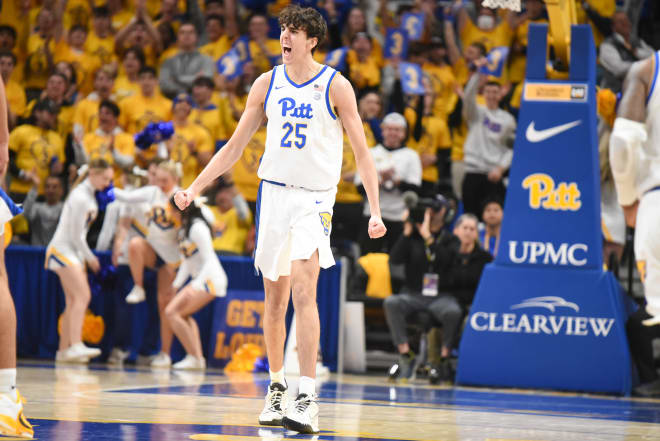
Burton’s best
There were a lot of impressions I took from Pitt’s win at Louisville on Wednesday night, from Greg Elliott’s explosion to Guillermo Diaz Graham’s growth and aggressiveness, from Nate Santos showing that he’s got more tools than we gave him credit for to Nike Sibande earning that “Spark” nickname I gave him (that thing is going to stick).
But the one thing that stood out the most, the thing I couldn’t stop thinking on Wednesday night, the thing I talked about at length on the post-game show and Thursday’s Morning Pitt, was the play of Jamarius Burton.
I don’t know if Wednesday’s game was Burton’s best at Pitt. He has had games with more points and more three’s and all of that. He has put up bigger stats than he did on Wednesday night, both this season and in his previous stops.
Like Pitt’s win over North Carolina on Dec. 30, when Burton went 14-of-17 from the floor and scored a career-high 31 points; that was probably his best game as a Panther.
But Wednesday night just might have been his most impressive performance since coming to Pittsburgh.
For starters, he recorded his first career double-double, tying his career high in assists with 11. Prior to Wednesday night, Burton had hit double figures in dimes just twice: he had 10 in a game at Tulsa during his freshman season at Wichita State and 11 in a game at Oklahoma State during his sophomore season (maybe he’s just really good at distributing on the road).
It wasn’t just the assists, though, even if they were really impressive. And it wasn’t just his sharp 10 points on 5-of-9 shooting. Or committing just two turnovers. It wasn’t just any of those things; it was all of those things and, even more, it was the way Burton seemed to be in control.
I am 100% convinced that if Jamarius Burton thought Pitt needed him to score 30 to beat Louisville on Wednesday night, he could have dropped 32. I believe he was fully and firmly capable of taking complete control of that game at any moment if he needed to.
There’s no real tangible way to measure this, no quantitative analysis that can back it up. It was something you could see. It was something you could feel. When he needed to remind Louisville that he could take any one of the Cardinals’ defenders off the dribble, he did it. And when Louisville started respecting that, he dished out more assists.
To wit, nine of Burton’s assists came on three-point baskets. Greg Elliott made five three’s and Burton assisted on four of them. He also assisted on three-point baskets by Guillermo Diaz Graham, Nelly Cummings and Blake Hinson. And when Pitt trailed in the first half 14-13, Burton assisted Nike Sibande’s three that made it 16-14, and then did it again one possession later, connecting with Sibande to turn a 16-16 tie into a 19-16 lead that the Panthers wouldn’t relinquish.
Burton made them go on Wednesday night. That’s not necessarily new. But I don’t know if I’ve seen another performance like that, where it truly felt like he could do anything he wanted at any point.
That was probably a big reason why the game never felt like it was in doubt.
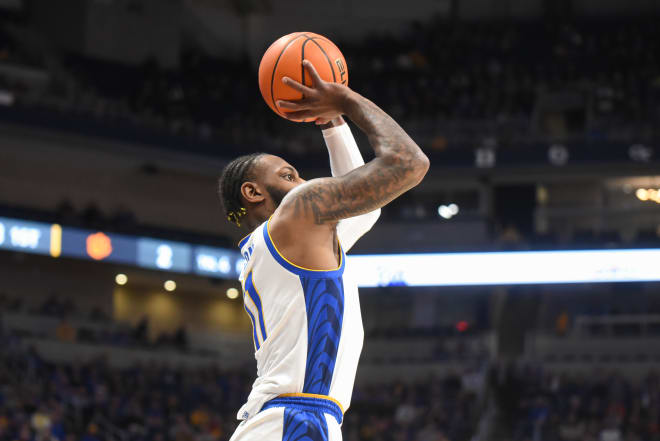
Don’t burn bridges
If there was any lesson to take from this year’s offseason and recruiting cycle - and, you know, life in general - it’s this:
Don’t burn bridges.
This is probably easier said than done, but coaches like Pat Narduzzi, who seem insistent on never letting a slight go unanswered (whether it’s perceived or real), would do well to take heed of that age-old advice.
Don’t burn bridges.
If Narduzzi had taken it personally when Phil Jurkovec turned down Pitt not once but twice, then that relationship might have needed some repairing before Jurkovec would have agreed to join the Panthers as a transfer this offseason.
If Narduzzi had taken it personally when Donovan McMillon left Pitt out of his top 10 before committing to Florida, then that relationship might have needed some repairing before the Panthers could land McMillon as a transfer this offseason.
The same can be said for Derrick Davis, the former Gateway star who went to LSU and is now coming home to Pitt.
You could even apply this to Zion Fowler, who pulled the rare recommitment in December, rejoining Pitt’s recruiting class after decommitting in the fall.
In all of these instances, maintaining a positive relationship proved to be a good idea. I don’t think Narduzzi was particularly pleased with how McMillon handled the latter stages of his recruitment (and probably expressed as much), but now more than ever, Pitt’s head coach and all college coaches have to realize the value in keeping it civil.
No complaining to high school head coaches. No subtweeting. No snide remarks and thinly-veiled references in press conferences.
Maintain a cordial relationship, because you never know when you might get another shot at getting that guy on your team.
The F. Scott Fitzgerald Society claims that the author of The Great Gatsby is often misquoted and misinterpreted when it comes to arguably his most famous phrase:
“There are no second acts in American lives.”
Whatever Fitzgerald’s intentions, we can certainly dumb it down and say that the climate of college sports recruiting in 2023 is very much one of second acts. The transfer portal is literally full of thousands of second acts, both for players and coaches.
Miss on a guy the first time around? Well, you just might get another shot at him.
Just make sure you stay on friendly terms.
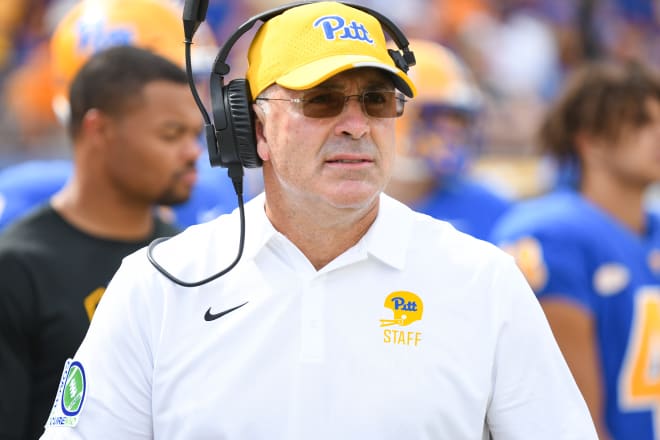
TWO QUESTIONS WE HAVE
What’s the best road trip?
On Wednesday, the date of Pitt’s 2023 game at Notre Dame was announced as Saturday, Oct. 28.
No start time was announced, but it’s a game at Notre Dame, so 3:30 pm is a safe assumption.
Now, in the wake of that news, I’m going to steal a topic Jim Hammett put on the message board and offer to you my ranking of Pitt’s six road trips this coming fall. These are based on my own experiences, having covered Pitt games at all six of these schools at least once each and, in the case of five of the six, twice or more.
6. Syracuse
I’m sorry. It’s just not a nice place to be. I’ve covered Pitt games at Syracuse in 2008, 2010, 2012, 2013, 2015, 2017 and 2019, and every single time, it was the same:
Cold, gray concrete. That describes both the Dome and the city. It’s just unpleasant. The only thing I’ll say in favor of Syracuse, and it’s pretty much the only reason you should attend at least one game there, is that it’s unique to watch a game indoors. Everything seems a little louder and a little more intense. On the coverage side of it, the press box is closer to the field than anywhere else I’ve been; that proximity, coupled with being indoors, lets you “feel” the game a lot more. It’s actually pretty cool.
Except for the fact that you’re in Syracuse.
5. Duke
I’ve been to Duke a few times: 2013, 2015, 2017 and 2019. It’s fine. You drive down into the holler and kind of pretend like you’re Junior Johnson running moonshine through the hills of North Carolina. That’s fun.
The stadium is pretty small, too, which is nice. But the visiting team’s locker room is a whole football field away from the football field. I’m not kidding: the players - and media, when it comes to post-game press conferences - have to walk out of the stadium and across a practice field or something to reach a building where the visitors’ locker room is.
Beyond the game, Durham is fine. A nice little town. Nothing too remarkable either way, but I’m sure if you went looking, you could find some good restaurants etc. Probably no authentic moonshine, though.
4. Wake Forest
I’ve only been to Wake Forest once; that was 2018, when Pitt clinched the Coastal Division championship and a spot in the ACC Championship Game. It’s pretty much the same as Duke, just an hour closer. That hour puts it one spot ahead of Duke. There’s not a lot of separation there, but shortening the drive is a bonus point for me.
3. Virginia Tech
Unlike the three schools mentioned before this, Virginia Tech actually has an atmosphere (or, at least, it does when the Hokies are good and/or there’s not a hurricane bearing down on Blacksburg).
The campus is pretty neat, too. You’ve probably heard how the buildings all feature Hokie Stone. Silly name aside - it’s made of dolomite, which is an infinitely cooler name - the uniform look of the campus is nice. I’ve been there four times: 2013, 2015, 2017 and 2019. Each time, I was a little let down by the “Enter Sandman” to-do, but it’s probably better when you’re in the stands as opposed to behind windows in the press box.
2. West Virginia
Going to Morgantown has everything you could want in a road trip: it’s close, it’s a game against a rival and it’s guaranteed to have a great atmosphere (even if it’s hostile).
The WVU crowd certainly earns its reputation, but that’s half - or more - of the fun of it. It will be loud and raucous, and if Pitt wins, you’ll have the extra fun of hearing your chants ring out through a quiet stadium.
There’s literally nowhere else you can go for that kind of college football atmosphere in 70 miles. It’s going to be a lot of fun.
1. Notre Dame
I’m a pretty cynical guy. Things like “tradition” and “prestige” and all the things that are supposed to “mean something” - they usually ring hollow with me and leave me feeling contempt for them rather than admiration.
But then I go to Notre Dame, which I have done in 2008, 2010, 2012 and 2018, and…well, it’s a pretty special place.
I don’t know what it is. Maybe it’s the history. Maybe it’s the campus. Maybe it’s all the statues of Notre Dame legends who have played and coached in South Bend.
Maybe it’s all of those things and maybe it’s none of those things. Maybe it’s simply walking into a giant bowl of a stadium and feeling like you’re watching what college football is Supposed To Be. Or at least what it Used To Be.
The press box is very updated, of course, but when you look out at the stadium, it’s not hard to think that you very well could be looking out at a game from 1932. No, it doesn’t have a lot of comforts in the stands (from what I can see), but there’s something to be said for that. There’s something to be said for college football as it used to be.
Then you throw in the shiny helmets and the Touchdown Jesus and all the other things that come with it, and you’ve got a pretty great experience. It’s worth seeing at least once. And if you go once, you’ll probably want to go back again.
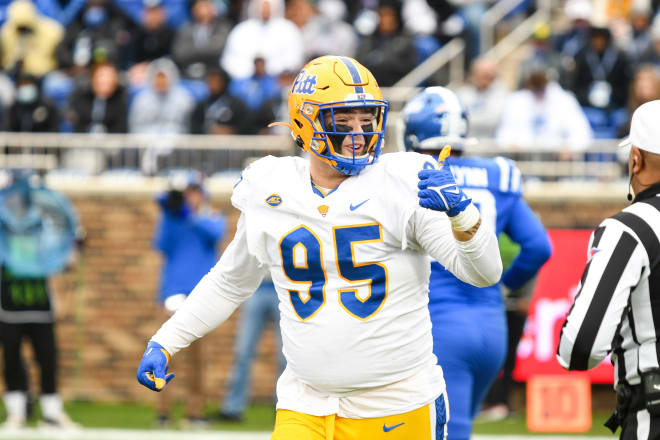
How can you crack the code of the locals?
Well, here we are again.
Another top local recruiting target is leaving Western Pennsylvania. The names and destinations change, but it’s a story we’ve seen over and over again.
This time, the player is Anthony Speca. He goes to Central Catholic and he’s going Penn State.
Before that, the player was Ta’Mere Robinson. He went to Brashear and he’s going to Penn State.
Before that, the player was Tyreese Fearbry. He went to Perry and he went to Kentucky.
I can go on and on, but you probably don’t need me to and you definitely don’t want me to. Suffice to say, local recruiting hasn’t been too kind to Pitt.
Now, there are a whole bunch of disclaimers that we always offer in these discussions. We’ll probably get to them all, but let me start with this one:
Losing local targets is not unique to Pat Narduzzi. Nor was it unique to Paul Chryst or Todd Graham or any of their predecessors. Even Dave Wannstedt, with his wall around the WPIAL - Wannstedt’s WPIAL Wall? - lost top local targets. Even he didn’t get everyone he wanted from Western Pennsylvania.
Now that we have that disclaimer out of the way, let me follow up by saying, it’s been especially rough in recent years.
I did some digging into the Rivals rankings for the state of Pennsylvania in the last eight recruiting classes (2016-23). Rivals bounced back and forth between ranking the top 25 and the top 30 players in the state, so let’s standardize to the top 25 in each class, just to make it even.
Over the last eight classes, 76 players from Western Pennsylvania have been ranked among the top 25 prospects in the state. On average, that’s 9.5 per year (that’s probably something we can dig into another time: only about 38% of the top-25 prospects in the state over the last eight years have come from this side of Altoona).
Of those 76 prospects, I would consider 55 legitimate Pitt targets. The other 21 were guys who ended up in the MAC or Ivy League or service academies. Quite a few never had Pitt offers, and some who did get an early offer from the Panthers found it non-committable later in the process.
Details aside, we’re getting into the key number here. Are you ready for it? It’s not good.
Of the 55 legitimate targets in Western Pennsylvania over the last eight recruiting classes, Pitt got 23.
Batting .400 is great in baseball. It’s considerably less good when you’re talking about your local recruiting footprint. Nobody wants to be the Ted Williams of local recruiting.
We know Pitt has been losing guys. Speca is the latest, but he certainly wasn’t the first one this decade and he won’t be the last. The question here is, what can Pitt do about it?
There’s a couple options that come to mind:
1. Win more games. 2. Get better recruiters.
Well, Pitt won 11 games in 2021 and added another nine this year for a nice 20 over two seasons. The Panthers also won the ACC last year. And yet, here we are. So maybe that’s not the cure-all.
As for the recruiters, I think Pitt has tried. Charlie Partridge and Cory Sanders, arguably the Panthers’ top two assistants on the recruiting trail, have both been tasked with working the WPIAL at various points over the last few years. And yet, here we are.
I guess this is a question without an answer. I’m not sure what Pitt can do to crack the code of recruiting Western Pennsylvania. Penn State is always going to get guys out of the local area. Ohio State and Notre Dame will, too, when they decide to show up (surprisingly, OSU hasn’t gotten anybody from Western Pa. since Marcus Hooker in the 2018 class; meanwhile, Notre Dame took three guys in the 2017 class and only three in the six classes since then).
On top of that, I’ve long held the belief that maybe local recruits are just too close to Pitt. They see all of the Panthers, both the good and the bad, whereas the coaching staff can control the narrative a little bit more when recruiting players from outside the area.
There’s no good answer, though. Or, if there is, I haven’t found it. I don’t think Pitt has, either.
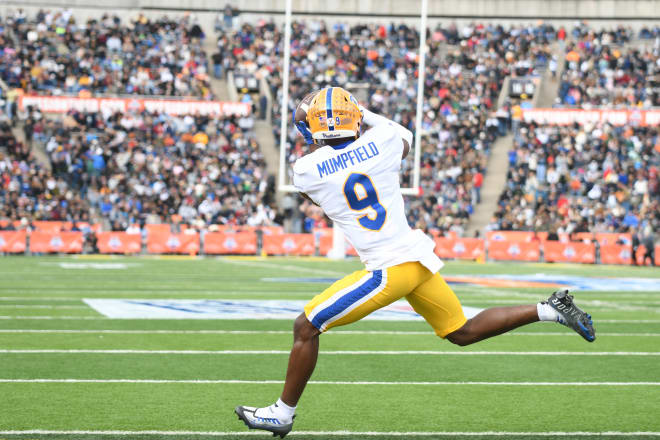
ONE PREDICTION
Mumpfield will be better in 2023
I’ll admit to having been on the Konata Mumpfield bandwagon for awhile now. When he first emerged as a top transfer target for Pitt in December 2021, I said I thought he was one of the top receivers in the portal. When he picked the Panthers, I said I thought he would be a great complement to Jordan Addison.
When Addison left after spring camp, I said I thought Mumpfield would be Pitt’s No. 1 receiver.
And when Mumpfield caught six passes for 74 yards in the opener against West Virginia, I thought it was coming to fruition.
Unfortunately, that game was something of a high point for the sophomore receiver. He matched or topped his WVU reception total just three more times in the regular season and only topped the receiving yards once (he had 75 yards on seven catches against Georgia Tech).
Mumpfield finished the year on a high note, catching seven passes for 78 yards (a season high) in the Sun Bowl, averaging 11.1 yards per catch for his first double-digit average in a game since Week Five.
Offsetting the three games when he had 70+ receiving yards (West Virginia, Georgia Tech and UCLA), Mumpfield had six games with less than 40 receiving yards and three with less than 30. He also only caught one touchdown, a six-yard pass from Nate Yarnell at Western Michigan.
It wasn’t exactly what was expected from the freshman All-American.
But my prediction today, which everyone will likely forget in September unless he’s really good and I remind everyone of it, is that Mumpfield is going to have a much better 2023.
Better productivity. Better stats. Better explosiveness. Better everything.
I don’t know how much better, but he’ll improve on his 59 catches, 554 yards and one touchdown.
How will he improve?
Through better usage.
I talked about this on the message board this week, but it bears repeating:
Mumpfield’s usage during his under-performing 2022 season was quite a bit different from how he was used during his freshman All-America campaign in 2021.
At Pitt, the goal was to get the ball into his hands quickly and let him make a play. Which sometimes worked. On passes behind the line of scrimmage, he averaged 9.6 YAC (yards after the catch) per reception. When he was targeted between the line of scrimmage and nine yards downfield, he averaged 3.6 YAC per reception. That one’s not quite as good, but still solid as he could, on average, typically turn a target of six or more yards into a first down.
But the biggest difference between Pitt and Akron, when it comes to Mumpfield, is in the medium range, the passes that are 10-19 yards downfield. At Akron, he was targeted 42 times in that range and caught 23 passes for 315 yards and three touchdowns. He didn’t average a ton of YAC at that distance - 2.1 - but he averaged 13.7 yards per reception, which is good enough.
Compare that to Pitt this past season. After being targeted 42 times in the 10-19 range at Akron, he saw just 19 passes there in 2022. He caught 13 of them for 186 yards and his touchdown (officially a six-yard score, but he was several yards into the end zone when he caught it).
In some ways, he was more effective in that middle range at Pitt than he was at Akron, catching a higher percentage of passes for a higher yards-per-reception average (14.3 compared to 13.7). Without being overly simplistic, it just seems like Pitt should try to get Mumpfield looks in that area of the field more often. He functions well there and has been successful there.
If Frank Cignetti emphasizes that, I think Mumpfield will take a big step forward.
